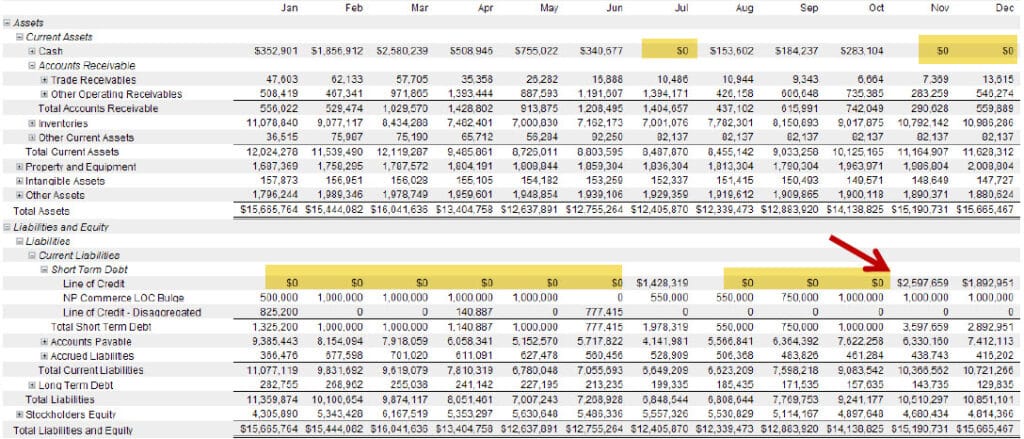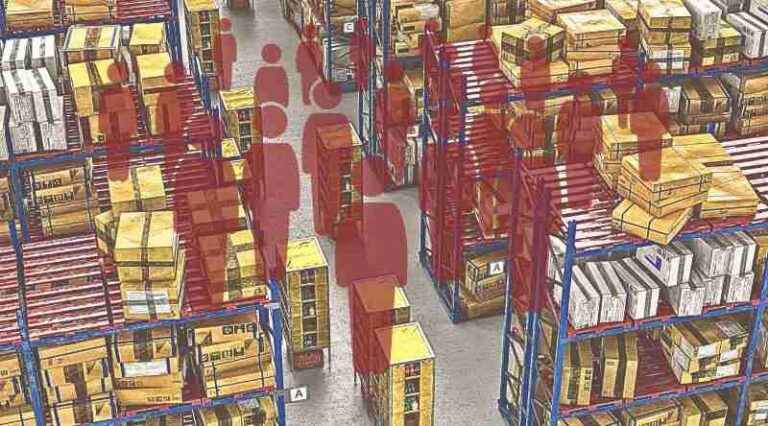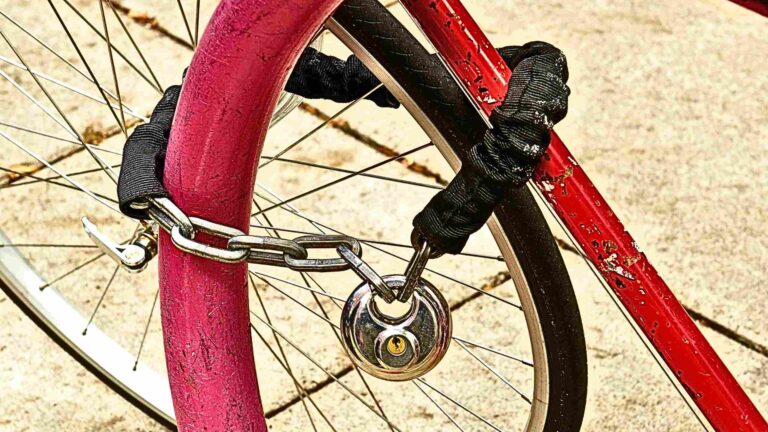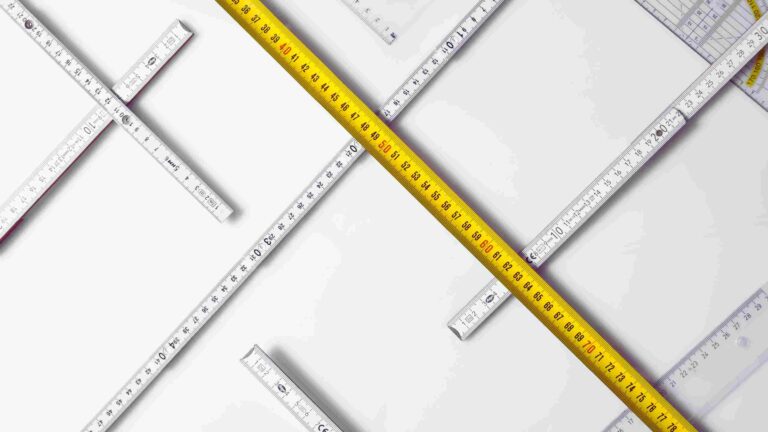I finished my first consulting project in 1993. I turned that enjoyable outcome into a full-time consulting practice eight years later. Since then, I’ve never had a business owner or CEO ask what their minimum cash balance should be. I know why and will provide my opinion later in this post.
However, there are three categories of employees who do inquire about minimum cash balances. They are bookkeepers, accountants, and accounting managers (but a controller has never asked). When these analytical types ask about minimum cash balances, they usually ask the wrong question. Their real question is, “How do I handle this cash crisis I’m handling?” But it comes out as, “What should be my minimum cash balance?”
I’m going to attempt to answer both questions in the following paragraphs.
Owners Are Generally Positive and Adaptive
Before I start answering the cash questions, why are owners seemingly indifferent to potential cash crunches? I try to be careful about making blanket statements. Instead, I’ll state that the hundred-something owners I’ve served are generally positive and quickly adaptive to problem situations.
That’s why Bob in accounting may be stressed out with next Friday’s $300,000 AP run with just $100,000 in the bank and the LOC nearly maxed out. The CEO, Mary is calm and does not seem worried. She’s been through this before. She’ll figure it out.
I’m not nervous, Bob. Nor am I like the no-worry Mary. I’m a realist with an objective mindset. I’m not saying either person is right or wrong. I’m just trying to point out to any accountant stressing over cash that owners may come across as disinterested or nonchalant because they tend to be hotwired with an unlimited supply of positive vibes inside their heads. As we move on, I’ll explain how the accountant can turn a stressful situation into one that’s objective and leads to a favorable resolution.
The Timing of the Money Question
The best time to ask about your minimum cash balance is not when you are about to run out of cash. It’s when you have ample cash on hand.
If you ask this question on the brink of running out of cash, the best question at that point is, “Which mole do I whack on the whack-a-mole board?” The mole represents a money obligation. The hammer represents your limited cash, and the person holding it is the decision maker.
As you are about to run out of cash, change your minimum cash question to the following:
- How do I resolve this short-term crisis?
- What if my boss is indifferent or unresponsive to my questions?
- Is it okay to ask for relief from our vendors?
- Should I alert the bank about our cash crunch?
I love these questions above, so let’s unpack them through an experience with another business owner.
Walking a CEO Off the Ledge
CFOs rarely solve problems. Instead, we take a messy mess and make it more organized until it gets messy again.
More than one CEO told me I walked them off a ledge with unexpected cash issues at the dawn of the pandemic. I cannot argue with one CEO in particular. Behind his back, I’ll state that I organized a mess that everyone could live with, including our banker and largest vendors.
Right before our potential cash crunch, our balance sheet was pristine. We had nearly $5 million of capacity on our line of credit. We could see around corners because we knew our sales would drop by 70 to 90 percent compared to the previous year.
We had large vendor payments due within the next six months. If we had to hit our LOC, would our banker renew it in July?
My CEO was stressed. He was worried he might lose everything he had built over the previous twenty years.
I suppose it helps to be emotionless in situations like these. I told my CEO that we would be objective and tell the truth. I created the most butt-ugly cash flow scenario I could imagine. How bad could the economy get? I planned for nearly zero sales in the following twelve months. I had my CEO pick our three largest vendors that we could meet to explore solutions that would work for both of us.
The short story is that all three vendors thanked us for our integrity, honesty, and objectivity. They provided us with terms that blew us away. Both my CEO and I were worried about them because they were going to take a cash flow hit from us and other customers of theirs.
I came up short with our bank. I wanted an unofficial approval that our credit line would be renewed. I didn’t need that approval in writing, just assurances they had our backs based on a great relationship grounded in truth, transparency, and integrity.
No luck. They said we’d have to wait until we went through the renewal process. At that point, it’s best to keep my thoughts to myself about this lender.
Thankfully, we never hit our LOC limit before the July expiration date, and our line was renewed. I’m also happy that the CEO did not renew them about one year later.
Let me recap your minimum cash balance question when you are about to run out of cash:
- Always tell your vendors and bank the truth when dealing with a cash crisis. In this case, the truth represents full transparency.
- Be humble. By being transparent, it’s probably impossible not to remain humble. Humility trumps being a hero during times of a cash crisis.
- Be objective. Thankfully, the CEO followed my advice. Several years earlier, he took ownership of my 13-week cash flow forecast. He also converted it into a 52-week cash flow forecast. Objectivity was never an issue for us. That meant we could anticipate problems far into the future.
Be truthful and transparent. Remain humble. Be objective. Those are the keys to dealing with a cash crisis – attitudes and perspectives that you control and can maintain.
The Original Cash Question
What was your original question? Oh, now I remember, “What should my minimum cash balance be?”
It depends because there are multiple answers. My favorite answer to this question is, “What do you want it to be?” No, I’m not joking.
There’s a reason for that thinking. Every CEO has a certain risk tolerance. I prefer keeping a $100,000 minimum cash balance in my small firm checking account. Where did that number come from? It’s a gut-feel number based on my risk tolerances. It’s also a decent cushion that I can make up quickly if I use any of that balance for small investments.
As of this writing, two of my best clients have balances approximating $3 million and $4 million, respectively. One has no debt, another has a manageable debt level. Their cash balances reflect their risk tolerances.
My all-time favorite CEO, who has created more employee millionaires than any other owner, tends to live more on the edge than his counterparts. He’ll tell you he hates debt. He’s just not scared of it. I call him my favorite bully to debt.
I’m an analyst. I need to validate the numbers to determine how much cash I need to maintain at a minimum. Intuition is fine if your cash flows are as predictable as Chick-fil-A.
What about situations where cash flow is inconsistent, and you probably miss your revenue forecasts? In those cases, we need a few simple tools to answer the minimum cash question (remember, we ask this question when our cash levels are adequate).
Cash is a Cost
I have a love-hate relationship with minimum cash balances. On one hand, I have peace of mind about future revenue downturns. That small mountain of cash serves as insurance for a rainy day. But at what cost?
Minimum cash balances do not appear out of nowhere. The current business model generates them. Minimum cash balances also mean delayed gratification for owner bonuses, discretionary investments, and other outlays we’d otherwise make.
There’s nothing free about a minimum cash balance. A strong business model, discipline, and patience are needed to build this minimum level to your acceptable target.
In short, your minimum cash balance is a cost. If you call it an investment, I won’t push back. Minimum cash balances represent a dead asset that can’t be spent until needed. Then the refill process starts over again. Spending money to replenish those minimum cash balances is no different from cash spent on other necessary expenditures. That’s why I call these minimum balances a cost.
Let’s Review Your Balance Sheet
Before I show you how I think analytically about minimum cash balances, let’s review your balance sheet first. This is important because there’s a difference between being an accountant and a treasurer.
Most accountants I know like familiarity, meaning their balance sheets must look a certain way. On the other hand, the treasurer is not interested in a GAAP presentation. She’s focused on the numbers she can control and adjust as needed. Let’s take a look:
Before we move on, there are some important takeaways:
- We need to look at cash as a system instead of the components comprising cash. Accordingly, when you think about cash, think of the LOC, too. The LOC is nothing more than an overdraft account. When modeling cash projections, I net the two together as I arrive at minimum cash requirements.
- Since I’m including the LOC with cash, I will slightly change my terminology from a minimum cash balance to my required cash availability throughout the year. That could mean $1, $3, or $5 million for some businesses. This means a business can function adequately, assuming their LOC limited match those aforementioned balances.
The Primary Method for Determining Your Minimum Cash Balance
Sorry if I confused you. I used the minimum cash balance in my header above because that’s what we’ve been discussing. However, my analytics suggest modifying the terminology to required cash availability.
My method for determining cash availability starts with modeling the business from sales through expenses and the entire balance sheet. For an inventory-centric business, I carefully model projected inventory balances as those typically impact the LOC.
In the case below, inventory peaks at nearly $10.5 million, a key diver to the LOC. Regrettably, I rarely see working capital projections and the underlying assumptions from CFOs and controllers in their bank packaging. Even for internal use, it’s needed to arrive at our required cash availability.

Lastly, I want to see what my projected LOC balances will be. These projected LOC balances will nearly always be far below LOC collateral values. Once you arrive at this report, you will have your required cash availability for the time period we are examining, 24 months in this case.

The above is the visual of the LOC component in the projected balance sheets shown below. The highest number represents our greatest cash need at any given point over this projection period. For context, this is a seasonal-based business where our average LOC is around $200,000 for about seven months of the year. I’m guessing our balance hits zero close to 100 times annually.
There’s no reason to show the projected P&Ls, but they augment and drive portions of the projected balance sheets below. Also, I’m sorry about the presentation. Even advanced modeling systems have terrible reporting presentations.

We’re essentially done figuring out your minimum cash balance or your cash requirement throughout any 12-month period or slightly beyond.
I go a step further, and that’s because I’ve been working on complex bank credits for years. I augment the process above by calculating my working capital need and comparing it to 1) the LOC borrowing base and 2) the LOC balance. Let’s take a look:
In summary, I use a two-step process to determine my monthly cash requirements for a future time horizon which is typically twelve months. If your business is simple and predictable, rely on your financial modeling, but keep hitting refresh every single month.
If you are an accountant, you may still be asking for a minimum cash balance. I don’t care because that $200,000 you hold on to should be applied to your LOC. Most banks I work with pull positive bank balances into the LOC nightly, and it’s automatic. That’s why a minimum cash balance is meaningless. What we care about is the total or maximum cash required, including the limit on your line of credit.
What About Excess Cash?
Now it’s my turn to ask a question. Is it possible to have too much cash?
With the businesses I work with, I don’t have a vote on what to do with excess cash. All I do is quarterback or reveal our cash needs over 12 to 18 months. It’s up to the owner to determine if he or she wants to pull some money from the table. Remember one of the businesses I mentioned earlier with a large, lofty balance? They have been buying neighboring land. Another makes periodic and discretionary paydowns on their debt and funding their growth internally.
Just like a minimum cash balance, I view excess cash as an expense too, but a much larger one. Excess cash is nothing more than a dead asset.
If you are not in this position right now, promise me that you’ll start thinking about this problem now. The right time to ask this question is when you don’t have enough cash currently.
A good CEO knows how to manage a P&L. A great CEO can manage the P&L and balance sheet equally well.
Mark Gandy, G3CFO
One More Time, What Is The Right Question to Ask?
When your business is humming with no cash hiccups now or about to happen, the right question is, “What should be my minimum cash balance or maximum cash need?”
Many times when I hear that question, it’s because there’s a cash time bomb about to explode. In those cases, the right question is, “How do I resolve this problem?”
Hopefully, I answered both. Unfortunately, we’re not taught this material in Finance 101 or even 201. We learn along the way. I started advanced financial modeling when I worked on my first acquisition in 1993, and that’s when the lights started to flick on. I also had a good teacher along the way.
Don’t be afraid to ask if this topic is still hazy for you.
FAQs
Question: Mark, we’re entering a cash crunch, and my boss doesn’t seem that worried. What do I do? I have bills to pay and payroll to meet. We’re about to hit our LOC limit.
Remember my big three above in resolving a cash crisis: truthfulness/transparency, humility, and objectivity. First, no emotions. You need ice in your veins. We need that mentality so that objectivity is not compromised. Pull out your 12- or 13-week cash flow forecast. Go over it with your boss. Let him or her point out deficiencies in your assumptions. If none exist, ensure the CEO points out your misunderstanding of the situation. If the situation is dire, like the one I shared above, you know the next steps to take.
When on a sinking ship, help others get off first, then help yourself at the end. Figure out the root causes of the sinking ship later.
Since I never let a cash crisis go to waste, I always figure out what caused the problem. I’m a business model guy. I care deeply about the underpinnings of finding, getting, and keeping customers. I want to figure out if our business model is crippled or if our cash problem was just poor management. Don’t skip this post-mortem once you exit your cash crisis.
Question: Should I make cuts in staff?
No, no, no. Don’t cut muscle.
Let me give you a slightly longer answer. I view costs in three big buckets:
- the costs to create, improve, or maintain capacity
- the costs to use that capacity (marketing, sales, and operations)
- administrative costs
Revisit your business model first. Is it sound? Do you have excessive excess capacity? If so, is it temporary or long-term? If temporary, try to keep your staff in place.
If I have to cut costs, I always prefer starting with administrative positions unless they are already too lean. If so, revisit those three buckets above, and just be careful about unintended consequences when trimming team members.
Question: How do I determine which vendors do not pay?
Business is an art, not a science. We only use science to help us understand and clarify the art we create daily. To say that business is all about relationships is redundant to state it’s an art. But let me focus on relationships.
If you take every single relationship seriously, you know who to call first. Typically, they will be your largest vendor who has been with you since day number one.
Typically, every business has from three to around ten critical suppliers in terms of dollars. Your CEO will know this answer.
For everybody else, ask me in private.
Question: Should I use a separate account for my minimum cash balance?
Do you have an LOC? No. Instead, your bank balance should never be positive unless you have no balance on your LOC.
If you don’t have an LOC, I’m okay with you having a money market account to which you can move money for a rainy day. I personally wouldn’t do this unless my CEO is sitting on excess cash he or she can’t invest elsewhere outside the business.
Question: I’m still confused about excess cash. What should I do about it?
I can’t help you. Go back and reread the section on risk tolerances. We can’t tell a CEO what to do. I also have a rule of never saying, “You should,” at the beginning of a sentence with an owner or CEO.
Our job is to offer options. Remember the saying, “Make incisions, not decisions.”
However, definitely contact your bank about the security of your excess funds. It’s possible you might need to spread that cash out through other banks.
Question: Have you ever experienced a major cash crunch in your career?
I’ve already provided one example earlier, but that situation did not bother me. I was more concerned about the CEO’s anxiety than the current and future financial health of the organization.
There is one story I’ve never shared, which still bothers me a bit to this day. I will wrap up this post with that incident in the epilogue below.
Epilogue: The Controller’s Cash Nightmare
In my first controllership position, our leadership was weak. We couldn’t get the right merchandise on store shelves at the right times. Stock outages were common. Too much of the wrong merchandise was an issue too. Plus, we were terrible at marketing. Those problems led to serious cash issues during my first year in this position.
I replaced both the outgoing CFO, who was terminated, and the controller, who was asked to manage a different part of the business. They both left me with a serious problem that I hated. Because we were continually short on cash, they held printed checks until we had the cash to cover them.
Care to guess how many dollars we were holding at any given time? Close to $8 million. Sometimes the number was slightly higher, other times, a bit lower.
I had a firm rule with vendors when they called us. No lying. We always told the truth. One of the pat answers from my AP manager was, “Let us look into that, and we’ll follow up with you.” That meant that the held check went to the top of the pile.
Vendors started to figure out what we were doing. It was too much of a hassle to go back and reprint checks. That meant AR clerks who received those checks could tell we were delaying mailing those disbursements. Word slowly began to leak out in this tight-knit community of suppliers as we were one of the 800-pound gorillas in this specialty retail niche.
I was frustrated because we badly needed a cash infusion from our wealthy owners. Their guiding principle was that each of their investments needed to stand on its own two feet. I don’t fault them for that. I critiqued what happened about three months into this cash crisis I inherited.
We had a $25 million operating line of credit. I had the authority to draw $1 million on the line, no questions asked. Administratively, I reported to one boss. Functionally, I reported to three bosses. I had an AP manager in tears and ready to quit, and I was running out of ideas to appease disgruntled vendors.
I ultimately called Commerce Bank to draw $1 million on the line allowing us to get a higher volume of smaller checks out to a large group of vendors. Well, cow dung hit the fan, and it was not pretty.
While I got a mild tongue-lashing from one of my bosses, I was fine, and we got through that mess.
The only reason I share this story is that I can feel your pain if you are worried about your current cash crunch. I’ve been in your shoes. Don’t carry the world on your shoulders when addressing a cash crisis. Get help. I know someone who can guide you in the right direction.







